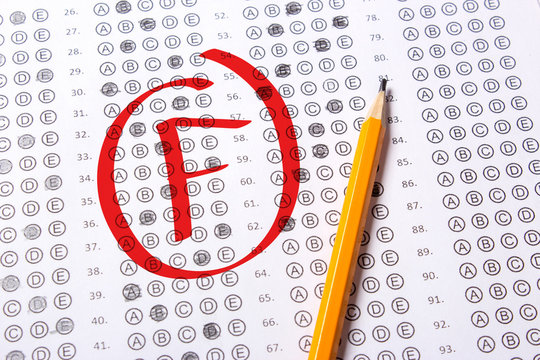For many students, the simple routine of waking up and going to school has been lost. A nationwide issue has been plaguing our school: chronic absenteeism, partially due to the Covid-19 pandemic. It didn’t just disrupt our learning but caused a crisis still today five years later. At Heritage High School (HHS), staff is working to determine causes and solutions to combat this matter and explaining the setbacks from chronic absenteeism, reasons, and the impact it has on a student’s academic and social well-being.
Regular attendance plays a key role in a student’s academic performance. According to Jeffrey Adam, principal of HHS, chronically absent students suffer academically and socially. By missing school, students have trouble keeping up, jeopardizing their performance

and the ability to comprehend new material. This leads to difficulties during assessments, including standardized tests like the SOLs. Confirming this view, Michelle Martin, an HHS social worker, stressed that chronic absence correlates to lower grades. Students miss class and start to fall behind, and this academic decline creates a damaging cycle, often leading to feelings of anxiety, depression, and isolation that only worsen a student’s ability to get back on track. “Chronic absenteeism can significantly impact skill acquisition, especially in topics such as math or chemistry where skills build upon each other,” Laura Wiand, HHS psychologist, further explained. While a couple of days don’t seem like that much, the work can pile up quickly. Overwhelming feelings arise as students struggle to make up work independently, leading to poor academic outcomes.
As mentioned before, consistent attendance goes beyond academics, but also develops crucial skills and connections. As Wiand pointed out, being in schools helps foster a community, coupled with the vital skills children need to thrive to be successful functioning adults. Martin dives deeper by explaining that consistent attendance enhances students’ socialization skills, advancing their companionship and empathy. These relationships that students form from being at school teach them about perspective, meaningful friendship, and a proper work ethic. Martin emphasized the necessity for these skills not only for school, but as vital life skills: “Being on time, making polite conversation, and the ability to listen and express one’s viewpoints are needed when one is active in their community.”

Adam added that the benefits of in-school activities, such as clubs, are key ways for students to interact with one another. In the Pride, family and community are very important; however, by being absent, students miss out on these social interactions and can feel more isolated. These exchanges are not easily made up. Jennifer Zecher, Student Support Advisor, specified that students can start to lose some of their friend connections, demonstrating that school is more than academics, but also the relationships fostered with people. Academics and community go hand in hand. Those who don’t feel a sense of belonging suffer academically, resulting in increasing the difficulty for students to perform their best.
With cellphones, laptops, and social media, digital communication is the new norm. Wiand pointed out how it has come to replace face-to-face conversation, furthering the importance of attendance. School is the only place where students can experience meeting new people and developing important social skills, such as problem-solving, positive communication, and the ability to properly function in different social settings: capabilities that are declining due to the advent of the digital age. Moreover, chronic absenteeism and not forming relationships can lead to behavior issues and increase struggle, increasing outbursts.
The attendance policy’s main focus is on having students arrive on time, simply because consistent attendance improves content retention and engagement. Adam expressed that classes are structured to include many opportunities for students to interact, collaborate, and debate with each other, significantly aiding their understanding. However, students missing class hinders these vital connections, impacting themselves and their peers who lose chances “to be together and to learn better,” according to Adam.

Increasing attendance requires determining the underlying reason for missing school. While each case varies widely for why a student might be absent, the most common barrier is illness. A student misses a couple of days due to being sick; however, chronic absenteeism roots deeper than common colds. Students may be in a position where they must help their families or provide for their own needs. Martin verbalized some of the struggles students face with some “having to work for survival”. For instance, some students are in charge of taking care of younger siblings while their parents work long hours beside them and don’t have time to support the students or hold them accountable if they skip school. Furthermore, students who live outside of Heritage’s zone face other struggles. Adam explained that students can flounder if they are lacking reliable transportation, especially if they miss the bus.
Beyond systemic and student-based barriers, parents also play a significant role in chronic absenteeism. For example, students commonly miss school for family vacations. While parents believe kids will be fine as long as they can access their assignments online, Adam explained this is not the case. Being online does not compare to being face-to-face in a classroom. Adam stressed that parents must be accountable for their child’s attendance, ensuring the school is informed of any absence, whether for a doctor’s appointment or other reason.

On the same topic, sometimes parents wanting to help can cause more harm. Wiand revealed that parents of anxious children let them stay home; however, parents unintentionally teach a “maladaptive coping strategy”. By staying home due to anxiety, students learn to cope by avoiding stressful situations rather than trying to confront the feeling. On the other hand, when parents are unable to properly support their children, either because of long hours, illness, or disabilities, the child may also struggle with coming to school. As Martin put it, parents are integral parts of students who give them the tools and support to make sure they succeed in school, and while teens may be viewed as mature enough to handle themselves, people do not fully develop their frontal lobes until around 25 years of age. This basically means that while they may be old enough to cook their own food, they are not old enough to support themselves; they are constantly needing assistance to do well in school and life. Given this influence, parents are regarded as partners in combating chronic absenteeism. Zecher explained how staff reach out to the homes of struggling students with community resources. Constantly working with parents is essential. Staff are continuously learning helpful strategies that further support students, “really making sure the parents feel valued ,and they are part of the team because they are the most important part to a student.”

Furthermore, mental health challenges often create barriers to consistent attendance. Students who struggle with a positive mental space also struggle with engaging in school. According to Martin, anxiety and depression can manifest themselves in physical issues such as headaches, stomach aches, etc. This only augments students’ lack of desire to come to school, making it difficult to attend class without experiencing frustration. Confirming this link, Adam explained that schools themselves can be a source of anxiety, only worsening attendance. To counteract this, staff work closely with families to make school a supportive and comfortable environment. These supports can range from telling a student how wonderful they are to spending a day in ReSet or checking in with counselors. Additionally, students who are struggling with catching up have personalized “Return to Learn” meetings that gradually help them get back on track.
Barriers to attendance can also stem from student demotivation. While the reason is unclear and can vary, they can range from exhaustion from outside commitments to breaking through a routine of missed school. However, the core issue is disconnection; students are not seeing the value of education. Both Wiand and Martin emphasize the importance of being connected. They can push through daily difficulties if they feel supported and valued. As Wiand explains, “It’s easier to see the value in your education when you feel valued as a student.” According to Wiand, data has also supported that welcoming school environments can increase student participation and attendance.

Moreover, Adam and other admin believe that COVID-19 was a main cause for worsening attendance. The prolonged quarantine changed everything about the world from schools to workplaces. Coming back required an immense amount of rebuilding. Specifically, Mjoness, HHS’s student activities & engagement coordinator, brought attention to the lack of stamina students have. Being gone for over a year disrupted a vital routine of getting up and going to school, making it draining to be in a building all day. Furthermore, online learning left students with gaps in their knowledge, resulting in students struggling to do higher-level classes. Anxiety and depression rose as well during lockdown due to factors like isolation, loneliness, stress, and even fear in children. This directly correlated to students’ lack of motivation in going to school. However, teachers and staff have seen an improvement in this stamina as time has passed since COVID.

Work can pile up after missing school only deteriorating students’ wanting to come back, which is why the school has a team of staff members whose role includes lessening the anxiety from returning to school and making catching up as manageable as possible. While support is personalized, general aid consists of study hall support, visits to the reading/writing/math centers, meetings with teachers, and organizational help for assignment prioritizing. This team also provides check-ins, responsive services, and targeted short-term counseling. Social workers, like Martin herself, also work with the team and parents, as well as provide mental health resources for the family and student, ensuring that the return to school is supportive, structured, and focused on long-term student success.
State guidelines regarding attendance require the school to begin intervening once a student misses 10% of instructional days, aka chronic absenteeism. However, schools proactively engage with students and families well before this time, aiming to stop the issue before it escalates. To ensure accountability and help students manage their time, consequences and rules are also put in place to increase attendance. For example, Adam highlighted the new country regulation requiring students to be present at 9:30 to participate in extracurriculars. Balancing accountability with encouragement, Adam explained that the school’s intervention process involves recognizing students for consistent attendance. By rewarding students for the correct choices, schools can provide positive motivation and reinforce the habit of timely arrival.
To be in line with the school’s mission, High Challenge, High Support, Heritage is constantly assisting, especially after COVID when attendance dropped dramatically nationwide. On the school level, Adam, in response, employed different supportive tactics to raise attendance explaining, “It’s as simple as being in the very front [of the school entrance], greeting everybody, and telling them how great and how glad I am that they are here.” Martin added that community resources are also available for more home-based and mental health concerns. Helping parents with housing, food, and utility assistance facilitates their ability to devote more time to supporting their children and preparing them for school.
Ultimately, the school’s objective is to ensure every student has the chance to succeed both in school and in life through consistent, proper attendance. It is not only vital for the classroom setting, but also provides social skills required for being in the workforce. Students are supported daily academically and socially while learning essential material. Addressing chronic absenteeism is thus a fundamental investment in the overall well-being and future readiness of every student.









